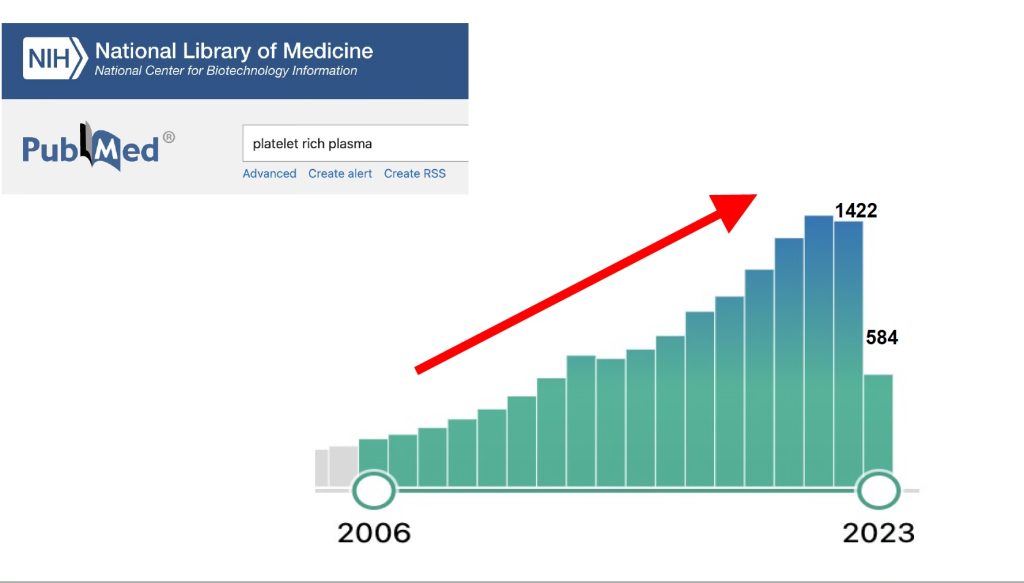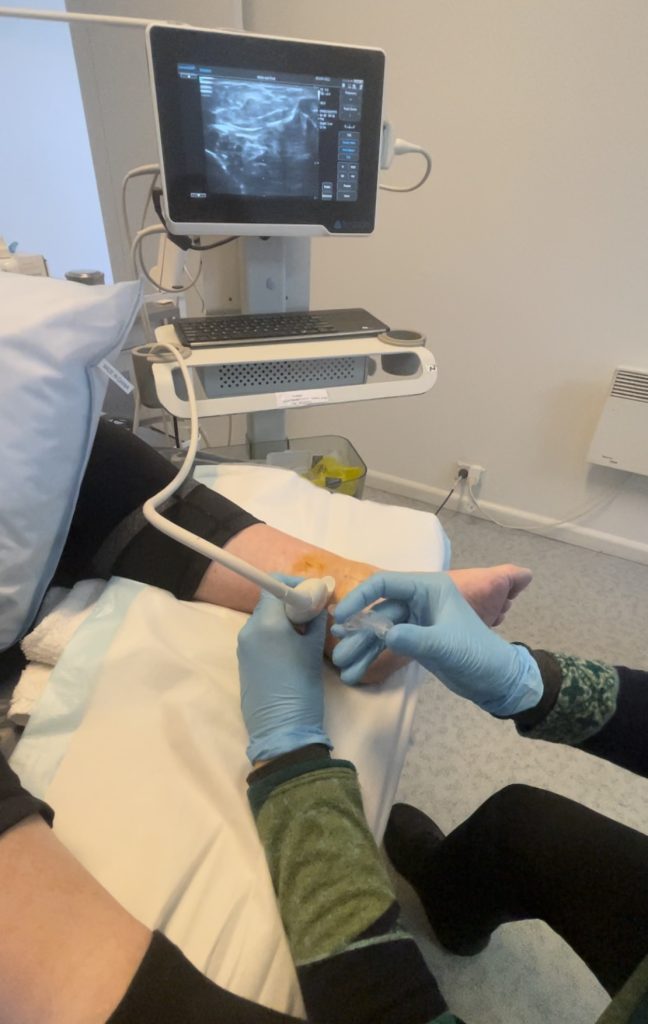The concept of platelet rich plasma (prp) is to utilize the body’s ability to heal itself.
Platelet-rich plasma (PRP) involves using a concentrated solution of platelets derived from a person’s own blood. Platelets are a component of blood that play a crucial role in the body’s natural healing process. They contain various growth factors and proteins that aid in tissue repair, cell regeneration, and clot formation. In prp, these growth factors are isolated and concentrated to speed healing, reduce inflammation and pain, and improve function. The process of creating PRP involves taking a sample of the patient’s blood and then processing it to separate the platelet-rich portion from the rest of the blood components, such as red blood cells and plasma using a centrifuge and sterile protocols. This concentrated solution of platelets is then injected into the area of the body that requires treatment, such as an injured joint, torn muscle, ligament, or tendon. Prp is an anabolic injectant, meaning it encourages to build up and heal tissue, whereas cortisone injections are catabolic, meaning to break down. Thus, prp is particularly useful, and has greater advantage over cortisone when trying to heal damaged tissues. Recent studies have suggested that PRP injections with higher platelet concentrations, a minimum of generally 5x the normal concentration when compared to the blood, might yield more significant pain relief and improved outcomes. The concentration of growth factors and healing factors in PRP is believed to play a role in reducing inflammation and stimulating tissue repair.
PRP has gained popularity with an exponential number of research studies over recent years for various orthopaedic conditions.

It is often used to treat injuries to tendons, ligaments, and muscles, such as tennis elbow, Achilles tendonitis, and knee osteoarthritis.
Indeed, research into the use of platelet-rich plasma (PRP) for foot and leg conditions has been growing steadily, and there is increasing interest in the potential benefits of higher platelet concentrations.
Plantar Fasciitis: Plantar fasciitis is a common condition causing heel pain. On occasions, the more stubborn cases that do not respond to conservative care, often involve partial tears to the fascia. These cases often respond well to prp. Here at Cheltenham Podiatry, we combine it with a specific program to speed healing, and get you back to what you love to do.
Achilles Tendonitis: Similar to plantar fasciitis, PRP therapy has been investigated for its potential in treating Achilles tendonitis, a condition involving inflammation of the Achilles tendon. Higher platelet concentrations might provide more concentrated healing factors to the damaged tissue, potentially accelerating the healing process.
Joint damage/degeneration: Prp has been investigated for a treatment for arthritis and joint damage, particularly in the knee joint. The last several years there is increasing number of positive studies confirming its advantage of other injectants as cortisone, for longer lasting pain relief, anti-inflammatory effect, and improved joint function. Its commonly used on ankle and knee joints here at Cheltenham Podiatry.
Ankle Sprains: PRP injections have also been explored for the treatment of ankle sprains and ligament injuries. Here at Cheltenham Podiatry, we often add it to our acute ankle sprain rehab program, to speed healing when ligaments are torn. It’s also often used on cchronic ankle conditions that fail normal conservative care.
Chronic Non-Healing Wounds: Chronic wounds on the feet and legs, such as diabetic ulcers, can be challenging to treat. Some research has suggested that PRP therapy, especially with higher concentrations of platelets, might promote wound healing and tissue regeneration, potentially reducing the risk of complications and amputation.
Fracture Healing: PRP therapy has been investigated as a potential adjunct to accelerate fracture healing in certain cases. While this application might not always involve higher platelet concentrations, the principles of delivering growth factors to the fracture site for improved healing align with the broader concepts of PRP therapy.
The use of ultrasound guidance in combination with higher platelet concentrations can assist in accurate placement of the PRP, improving the chances of positive outcomes.
Ultrasound guidance allows our Cheltenham Podiatrists to visualize the internal structures of the body in real-time, which can enhance the precision and effectiveness of PRP injections. Here’s how ultrasound guidance can be beneficial:
- Accurate Placement: Ultrasound imaging enables the medical professional to see the targeted area in detail, ensuring that the PRP is injected directly into the specific site that requires treatment. This accuracy can be particularly important when treating small or deep structures that might be challenging to reach with a blind injection.
- Real-Time Monitoring: With ultrasound, Cheltenham Podiatrists can visualize the movement of the needle in real-time, ensuring that the PRP is being injected into the correct location. This reduces the risk of unintended tissue damage or misplacement of the injection.
- Avoiding Sensitive Structures: In orthopaedic treatments, it’s essential to avoid injecting PRP into or near sensitive structures like nerves or blood vessels. Ultrasound guidance helps identify these structures, reducing the risk of accidental injury during the injection.
- Tailored Treatment: Different orthopaedic conditions may require injections into specific areas. Ultrasound guidance allows for a tailored approach, ensuring that the PRP is delivered precisely where it’s needed for the best therapeutic effect.
- Enhanced Results: By accurately delivering PRP to the target area, ultrasound-guided injections may lead to better treatment outcomes, as the healing factors in the PRP can have a more direct and effective impact on the injured or damaged tissues.
- Reduced Discomfort: Precise placement with ultrasound guidance can minimize discomfort during and after the injection, as the needle is directed to the precise location, reducing the chance of unnecessary tissue trauma.

Jacqueline Kan, Director and head podiatrist at Cheltenham Podiatry has over 8 years of expertise with prp and ultrasound guidance. She has trained locally and overseas with world experts, and this year attended the TOBI conference (brings together world experts in this field) and workshop to further her expertise. These techniques are commonly used as an adjunct for rehabilitation of plantar fascia tears, ligament and tendon tears, chronic ankle injuries and painful joint degeneration, including knee, ankle, and forefoot. The treatment speeds healing, and provides longer lasting results than cortisone injections.
Jacqueline continues to keep up with the latest developments and research in this area to ensure the best protocols are continuously fine-tuned, to provide our patient community with expert skills and techniques.
Book an appointment today
Latest News
Ankle Arthritis
Understanding Ankle Arthritis and Regenerative Treatment Options in Podiatry Ankle[…]




